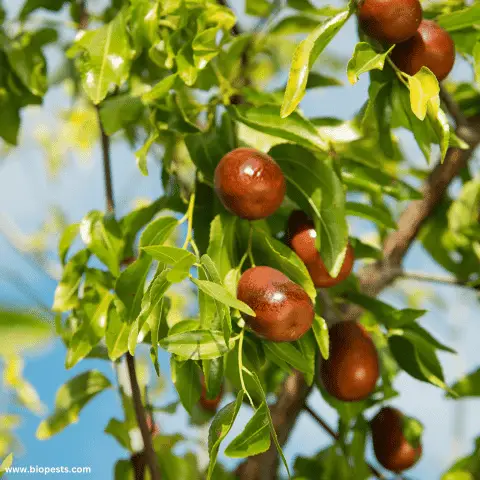Are you thinking of adding a Jujube tree to your garden? Maybe you’ve seen these remarkable trees growing in other gardens and now have the itch to put one in yours? If so, then this is the ultimate guide for you! Jujube trees are more than just aesthetically pleasing; they also offer various benefits, such as providing nutrient-rich fruit that can be eaten fresh or even dried. Plus, they require very little maintenance compared to other plants so it’s perfect for first-time gardeners. With this comprehensive guide, professional tips and tricks from experienced growers, plus some handy advice on how best to grow and care for a jujube tree – I know that it will make all your green dreams come true!
What Is A Jujube Fruit And Why It’s Becoming Popular
Have you ever heard of the jujube fruit? If not, let me introduce you to this fascinating fruit quickly gaining popularity in the health and wellness world. Also known as red dates, jujubes have been used for their medicinal properties in traditional Chinese medicine for centuries. But why are they suddenly becoming a hot topic? Well, not only are these small red fruits delicious, with a taste that’s been compared to a cross between an apple and a date but they’re also packed full of nutrients and antioxidants.
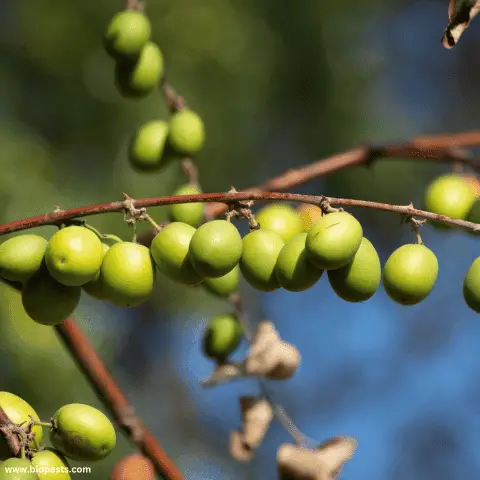
The Top 5 Benefits of Jujubes
The jujube fruit brings many benefits to your health and well-being. With its sweet and chewy texture, it’s not only delicious but also packed with nutrients.
First, on the list of benefits, jujube fruit is known to improve digestion and boost metabolism.
Secondly, it can help regulate blood sugar levels, making it an excellent snack choice for those with diabetes. Jujube fruit has been known to improve cholesterol levels and bolster the immune system.
Thirdly, it’s loaded with antioxidants and has anti-inflammatory properties, which may help protect against certain diseases.
Fourthly, jujube fruit is great for your skin, as it can help improve elasticity and reduce signs of aging.
Jujube fruit has stress-reducing properties and can promote better sleep quality.
And last but not least… it’s delicious! So, if you’re looking for a new fruit to add to your diet, give Jujube fruit a try and reap all of its excellent benefits.
What You Need To Know Before Planting A Jujube Tree
So, you’re considering planting a jujube tree. That’s fantastic! Jujube trees are a sight to behold when in full bloom, no wonder why more gardeners are beginning to plant this fruiting tree in their gardens
Before you go ahead and plant your tree, there are a few things you need to know upfront.
Space: First, make sure you have enough space for your tree to thrive as it grows to a mature height of 20-30 feet (from 6 to 9 mt) and spreads its branches to about 15-20 feet (4 to 6 mt).
Temperature: Jujube trees require full sun and warm temperatures in order to flourish. It’s important to choose the right variety of jujube tree for your climate. Some types thrive in hot, dry climates while others prefer more temperate conditions.
Choose the right type of tree: Two of the most popular include the Li and the Lang jujube trees. The Li tree might be your best option if you live in a hot climate. This variety is known for being drought-tolerant and thrive in warmer temperatures. On the other hand, if you live in a more temperate climate, the Lang tree might be a better choice. This variety is more cold-hardy and can handle cooler temperatures without issue. Ultimately, there are a few different factors to consider when choosing a jujube tree variety, but by doing your research and understanding your local climate, you can find the perfect tree for your needs.
Choose the perfect spot: As mentioned before, Jujube trees thrive in full sun and well-drained soil, so choose a location that receives at least 6 to 8 hours of sun each day and has soil that drains easily. Consider planting near a south-facing wall or fence where the tree can be protected from strong winds. If possible, avoid planting near buildings and areas that are prone to flooding or standing water.
Soil Requirements: The best soil for growing jujubes is one that’s well-drained, loamy, and rich in nutrients. Also, note that jujube trees are known for their hardy nature, meaning they can survive in different soil types, but they’ll fruit better in well-drained soils. I will deepen the subject further in my article. With the right soil, jujube trees can grow up to 30 feet high and produce delicious fruits that are packed with nutrition.
It’s a commitment: Lastly, it’s important to note that these deciduous trees can produce fruit for up to 100 years, so make sure you’re committed to the long-term maintenance of your tree. Remember, with the right location and care, you can enjoy the delicious, dried fruit of your jujube tree for years to come!
How To Prepare The Soil For Jujubes – Getting the Most Out of Your Fruiting Tree
It is important to know what kind of soil is best for your tree . Here I will explain the best soil for growing jujubes and what you can do to get the most out of your fruiting tree.
Jujube trees are very adaptable and can grow in a wide variety of soil types. However, they prefer well-drained soils that are rich in organic matter. Jujubes thrive in soils that are slightly acidic to neutral with a pH range of 6.0 to 7.0. They also prefer soil that is slightly sandy or loamy with good water retention capacity as they are drought tolerant.
When planting your jujubes, make sure to amend the soil with plenty of organic matter, such as composted leaves or aged manure. This will help to increase soil fertility and promote healthier root growth. The soil should also be well-drained, so water can easily pass through and not lead to waterlogging, which can cause root rot.
Another important consideration is the depth of the hole dug to plant the jujube tree. Dig a hole deep enough to accommodate the entire root system of the seedling but not so deep that the root flare, which is the area where the roots meet the trunk, is buried. The top of the root flare should be level with the soil surface after planting.
Mulching is another critical step in ensuring the health of your jujube tree. Mulching helps to conserve moisture, regulate soil temperature, and suppress weed growth around the tree. Organic mulch materials such as wood chips or bark are effective and break down over time, adding organic matter to the soil.
Finally, ensuring that your jujube tree gets enough nutrients to promote healthy growth and fruiting is important. Jujubes respond well to regular fertilization with a balanced fertilizer such as a 10-10-10 or 20-20-20. Apply the fertilizer 2-3 times per growing season, starting when the tree breaks dormancy in the spring.
Can You Grow A Jujube Tree From Seed? How Long Will It Take?
If you’re a jujube enthusiast and want to grow your tree, you may wonder whether you can grow a jujube tree from seed.
The answer is yes, you can grow a jujube tree from seed! However, the tree may take a long time to bear fruit. This is because jujube trees grown from seed often take more than three years to start fruiting, and even then, the fruit may not be as tasty as the fruit from grafted trees. So, purchasing a grafted tree from a nursery may be best if you’re looking to grow jujubes for fruit production.
When growing a jujube tree from seed, there are a few important things to keep in mind. First, you’ll need to obtain seeds. These can be found within mature jujube fruit, usually 1-2 inches in diameter. You can collect the fruit when it turns yellow or brown and let it ripen further in a dry, dark area for a few weeks before removing the seeds. Once you have the seeds, soak them in water for 24 hours to soften the seed coat.
Next, you’ll need to plant the seeds. Jujube trees prefer well-drained soil and full sunlight. Plant the seeds in a hole that is twice as wide as the seed and slightly deeper than the root. Cover the seed with soil and water well. It can take anywhere from 2-6 weeks for the seed to germinate, so be patient!
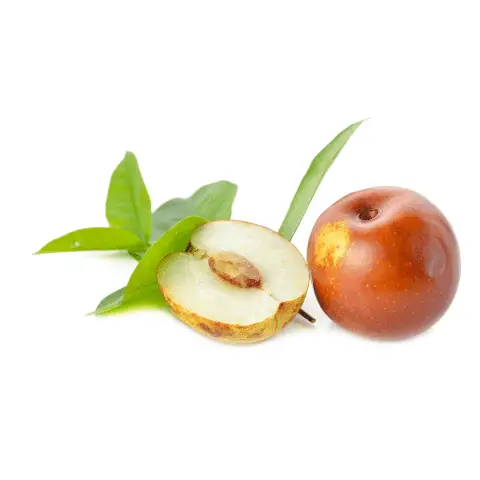
Can You Grow A Jujube Tree In A Container?
Have you ever wanted to grow a jujube tree but were hesitant because of the space it may require? Well, fret not! Growing a jujube tree in a container is not only possible but also an excellent option for people with limited space. Imagine waking up to a tree full of refreshing fruit every morning without leaving your home. That’s something to be excited about!
Choosing the Right Container: The first step in growing a jujube tree in a container is choosing the right container. The container’s size is central to the jujube tree’s growth and health. A small, shallow container would restrict the tree’s growth, whereas an excessively big container might provoke overgrowth, harming the tree’s health. A container that is at least 20 to 30 gallons in size (75 to 115 liters) is essential. Jujube trees need good drainage and soil that doesn’t retain water, so choose a container with holes at the bottom, allowing excess water to drain out.
Soil Mix and Fertilizers: The next step is filling the container with good, nutrient-rich soil. The ideal soil mix would be a mixture of sand, peat moss, and compost. Jujube trees prefer well-draining soil, so ensure you use a mixture that retains water but does not become waterlogged. Growing jujube tree in containers will also require frequent fertilization. It’s best to opt for slow-release fertilizers and organic fertilizers, as they help maintain healthy growth.
Placement and Care: Jujube trees require plenty of sunlight, so ensure that you place your container in an area that receives a minimum of 8 hours of sunlight every day. These trees are also relatively drought-tolerant, so avoid watering them too much. Water the jujube tree once every 1-2 weeks or when the top 2-inch layer of soil becomes dry. Pruning is essential for maintaining the tree’s shape and health. Be sure to cut the branches that appear weak, dead, and non-productive. Proper care, along with regular pruning and nutrients, will help your jujube tree thrive.
Harvesting the Fruits: The best part about container planting is that it’s relatively easy to harvest the fruits. Once the fruit ripens, it will turn reddish-brown, slightly wrinkled, and will be slightly sweet and crisp. The jujubes are small and can easily be plucked from the container. Rinse the fruit with water and enjoy it fresh!
Watering and Fertilizing Your Jujubes
Watering: Jujube trees are drought-resistant, but they still require an adequate water supply to thrive. Water your jujube trees deeply and less frequently, rather than giving them frequent shallow watering.
During the first year, it is essential to water the tree regularly, at least once a week. Once the tree has established itself, you can reduce the frequency of watering. However, ensure that the soil around the tree is still moist. During hot, dry summers, increase the frequency of watering to prevent the tree from drying out. It is also advisable to water the tree in the morning or late afternoon to avoid evaporation.
Fertilizing: Jujube trees require minimal fertilization, but adding nutrients to the soil can ensure a healthy harvest. A general-purpose balanced fertilizer with a ratio of 10-10-10 will suffice. Apply the fertilizer in the early spring before the tree starts to bloom. Follow the manufacturer’s instructions on the package to determine the amount to use. Avoid over-fertilizing, as this can cause damage to the tree. It is also advisable to apply a layer of compost around the base of the tree annually to maintain the soil’s fertility.
Mulching: Mulching is an essential step in jujube tree care that is often overlooked. Mulching involves spreading organic matter around the tree’s base, such as straw or wood chips. This layer helps to retain moisture in the soil, reduce weed growth, and prevent soil erosion. It can also help to maintain the soil’s temperature, keeping it cool in hot summers and warm in cold winters.
Pruning: Pruning is necessary for tree maintenance and can help increase fruit production and tree health. Jujube trees are known for their natural canopy and do not require heavy pruning. However, removing dead, damaged or diseased branches is essential for optimal tree health. Pruning can also help to control the tree’s size and shape, making it more manageable.
How to Deal with Common Pests of Jujube Trees
Jujube trees are a wonderful addition to any garden. However, just like any other plant, jujube trees are susceptible to pests that can harm their growth and fruit production. In this blog post, I’ll look at some of the most common pests of jujube trees and how to deal with them.
The Jujube Fruit Fly
The jujube fruit fly, also known as the Chinese date fly, is a major pest of jujube trees. The adult flies lay their eggs on the young fruit, and the larvae burrow into the fruit, causing it to fall prematurely or become deformed. To prevent infestation, cover the fruit with bags made of fine mesh to keep the flies away. You can also use sticky traps to catch the flies before they lay their eggs.
Jujube Aphid
The jujube aphid is a tiny insect that feeds on the sap of jujube leaves and shoots. This pest can cause stunted growth and yellowing of leaves; in severe cases, it can deform the stems. To control jujube aphids, you can use insecticidal soap or neem oil. You can also attract natural predators by planting flowering plants nearby, such as ladybugs and lacewings.
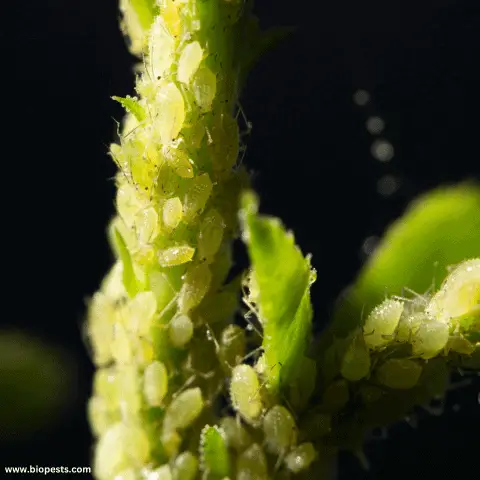
Spider Mites
Spider mites are common pests that can attack jujube trees. These tiny mites feed on the sap of leaves, causing yellowing and a speckled appearance on the leaves. They thrive in dry and dusty conditions, so keeping your jujube tree well-hydrated and dust-free can help prevent infestation. You can also use insecticidal soap or neem oil to control spider mites.
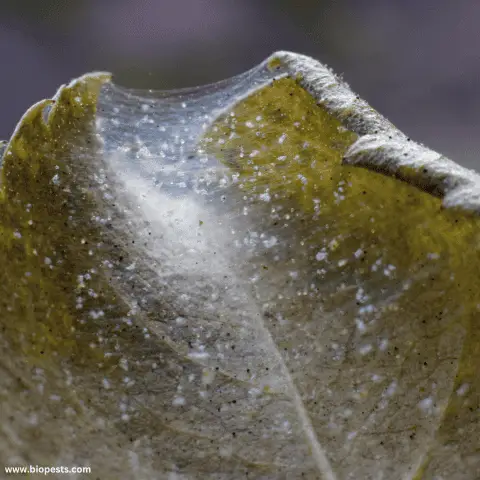
Scale Insects
Scale insects are small, immobile pests that attach themselves to the stems and leaves of jujube trees. They feed on the sap of the tree, causing yellowing and weakening of the plant. To control scale insects, you can use horticultural oil or insecticidal soap. You can also prune the affected parts of the tree and dispose of them properly.
Root-knot Nematodes
Root-knot nematodes are microscopic worms that can cause significant damage to jujube trees. They attack the roots, causing stunted growth, yellowing, and wilting of leaves. Plant your jujube tree in well-draining soil to prevent infestation and maintain proper irrigation. You can also use beneficial nematodes to control root-knot nematodes.
Jujube trees are resilient and can recover from most pest infestations if you detect and treat them early. Regularly checking your tree for signs of pests, maintaining good hygiene, and using natural pest control methods can help keep your jujube tree healthy and productive.
Tips For Harvesting Jujubes And Storing Them For Later Use
Jujubes are primarily grown in Asian countries, and harvesting them can be a bit tricky. In this article, I will share some tips on harvesting jujubes and storing them for later use.
Choose the Right Time to Harvest: Selecting the right time to harvest your jujubes is crucial. Jujubes are usually ready to be harvested in mid to late autumn. You should pluck the fruits when they are fully ripe, meaning their skin should have yellowish-brown spots and feel firm to the touch.
Harvesting Technique: Unlike most fruits, jujubes don’t necessarily fall off the tree when they are ripe, so you must take them off the branch yourself. A useful tip is gently twisting the fruit and pulling it off the branch. Avoid forcibly plucking the fruit from the tree because it could damage the fruit’s skin.
Storage Method: Once you have harvested your jujubes, they are ready to be stored fresh or dried. If you want to eat them fresh, store them in a cool, dry place to prolong their shelf life. Wash your jujubes with a mild disinfectant solution to prolong their shelf life further. Once cleaned, dry them with a towel and store in an airtight container in your fridge.
Drying the Fruit: Dried jujubes have a longer shelf life than fresh ones. To dry your jujubes, you can place them on a tray and dry them in a sunny spot, a well-lit room, or a food dehydrator. Drying jujubes in the sun is a common technique, but it may take a few days, so be patient. Once fully dry, store your jujubes in a cool, dry place in an airtight container for up to six months.
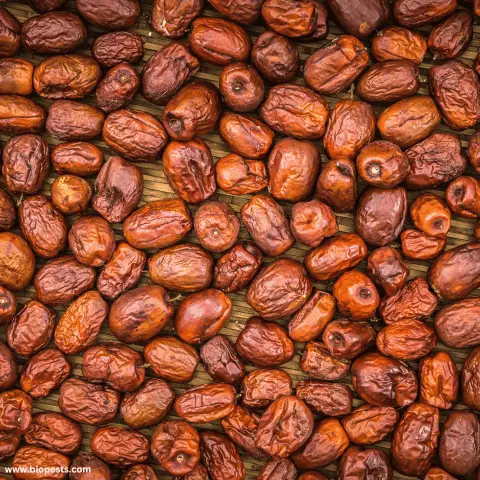
Uses for Jujubes: Jujubes can be consumed fresh or dried and are a great addition to several dishes. They can be added to teas, desserts, baked goods, or eaten as a nutritious snack. Dried jujubes also make an excellent addition to trail mix or granola. Jujubes are a natural sweetener, which makes them an ideal replacement for added sugar in many recipes.
Conclusion:
Now that you’ve finished learning how to grow and care for Jujube trees, there is one more point worth mentioning. Growing a Jujuba tree isn’t just about the physical process of cultivating; it’s about nurturing a living thing – something with striking flavor, singular beauty, and fragrant blooms. Planting and nurturing these special trees can be both satisfying and awe-inspiring experiences, sure to benefit both your yard and your soul. So get out there in your quiet corner of nature, make some space, get your hands in the earth, and give life to a Jujube tree. It just might bring you joy all year round!
Some of the links above are affiliate links, meaning at no additional cost to you, I will earn a commission if you click through and make a purchase.

